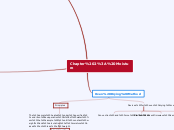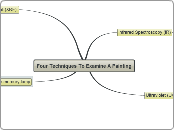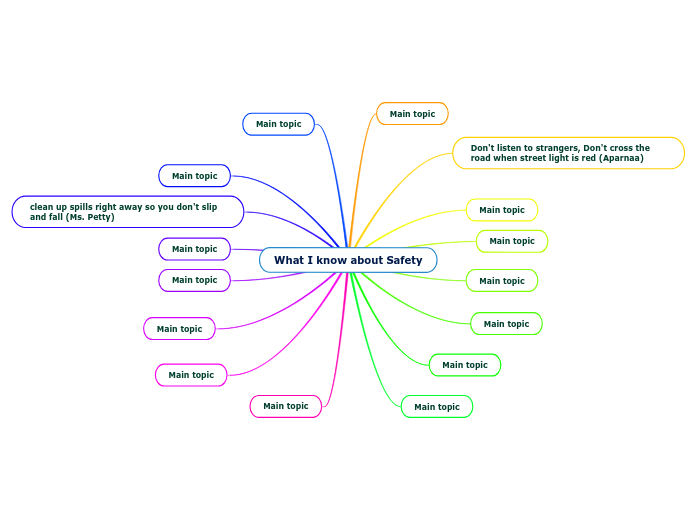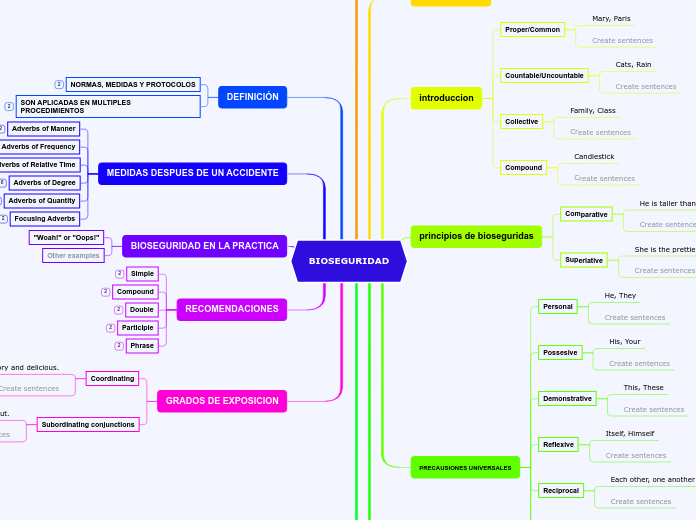Chapter 8:Vitamin
Vitamin B3(Niacin)
toxicity of cyanogen bromide, the analysis must be carried out under fume hood.
*Involves a reaction between niacin (nicotinic acid) and cynogen bromide, forms a coloured compound with an intensity proportional to niacin concentration (under proper conditions)
*The result expressed as μg niacin / g sample
Vitamin B1(Thiamine)
Thiochrome Fluorometric Method
Precautions
*Thiochrome is light sensitive, therefore, analysis should be performed under subdued light.
*Thiamine is sensitive to heat especially at alkaline pH. The analytical steps starting from oxidation of thiamine until flourescent measurement need to be carried out rapidly and precisely according to the instructions.
*In order to free the thiamine from the natural ester and protein bonds, the material to be examined is digested with sulphuric acid and subsequently treated with a phosphatase preparation.
*The thiochrome resulting from oxidation with potassium ferricyanide/hydrogen peroxide in alkaline solution is extracted with isobutyl alcohol.
*The intensity of the blue fluorescence proportional to the thiamine concentration.
*The intensity of the blue fluorescence of the isobutyl alcohol extract is compared with that of the standard solution. The intensity of fluorescence is measured
Vitamin C
*very susceptible to oxidative deterioration, which enhanced by high pH and presence of ferric and cupric acid. Therefore, the entire analytical procedure must be conducted at low pH and with addition of chelating agent.
*not suitable for highly coloured products (for example coloured fruit juices) because of difficulty of determining the endpoint during titration.
Fluorometric Method
*This method measures both ascorbic acid and dehydroascorbic acid.
*Ascorbic acid oxidised to dehydroascorbic acid upon reaction with o-phenylenediamine.
*Reaction between dehydroascorbic acid and o-phenylenediamine formed a fluorescent quinoxaline compound.
*The flourescent compound intensity proportional to the vitamin C content.
2,6-dichlorophenolindophenol Titrimetric Method
*L-ascorbic acid is oxidizes to dehydroascorbic acid by indicator dye.
*It measures the decolourization of 2,6-dichorophenolindophenol dye by ascorbic acid.
*At the endpoint, excess of unreduced dye is rose pink in acid solution lasting at least 10 sec.
Vitamin A
HPLC Method
*This method involve chromatographic separation and quantitative determination at 325 nm
Colorimetric Method
*It measures the unstable colour at A620nm that results from reaction between Vitamin A and antimony trichloride (SbCl3)
*The intesity of blue colour proportional to the amount of retinol in food sample.
*The intensity of blue colour is measured against the set of known standards.
*The colour reaction does not differentiate between retinol isomers and retinol esters.
Chapter 7: Ash & Mineral
4)Water Soluble & Water Insoluble Ash
*Useful indication of the quality of certain foods e.g. fruit content of preserves and jellies.
*Ash is diluted with distilled water, then heated to nearly boiling, the resulting solution is filtered and washed several times with hot distilled water.
*Dry and re-ash the filter paper in muffle furnace at least 30 min. until constant weight is achieved. The weight remaining represents the amount of insoluble ash.
*Calculate soluble ash by subtracting insoluble ash from total ash, or, dry the filtrate, re-ash and weigh.
5) Acid Insoluble Ash
High insoluble ash in acid indicates high contaminants.
*a useful index of soil minerals contamination such as to dirt or sand e.g. to measure of surface contamination of fruits & vegetables, wheat washing prior to milling and rice coatings
- Add 10% HCl to total ash or H2O-insoluble ash. Cover and boil the ash for 5 min. Then, filter on ashless filter paper and washed several times with hot distilled water. The filter paper + residue is dried and re-ash for at least 30 min. (until constant weight).
- The acid insoluble ash was weighed and calculate the percentage
6)Alkalinity Of Ash
- Useful to measure acid-base balance of the food and to indicate adulteration of the food with minerals.
- Quality index of fruit and fruit juices.
1) Place ash (total / water-insoluble ash) in platinum dish. Add 0.1N HCl and warm on a steam bath.
2) Cool and transfer to Erlenmeyer flask, titrate HCl with 0.1N NaOH using methyl orange as indicator.
3) Express the result as mL of 1N acid / 100g sample.
3)Low Temp.Plasma Dry Ashing
*Small sample capacity.
*Relatively expensive equipment.
*Less chances of losing trace elements by volatilization.
*Low temp. (≤ 150oC) preserve microscopic & structural components.
*Equipment of choice for volatile salts.
*Utilization of O2 as sole reagent.
1)Sample is placed into a glass chamber, sealed and vacuum is applied.
2)Small flow of O2 / air is introduced into the system while maintaining the specific minimum vacuum. Electromagnetic radio frequency generator is activated to control the rate of incineration, excites the gas molecules and dissociates it into chemically active atoms and molecules. Combustion products which are completely dissociated are carried away in the gas stream.
3)Variable power frequency adjusts the rate of incineration.
2)Wet Ashing/Oxidation
1. Hazardous. Requires fume hood, hot plate, long tongs and safety equipments.
2. Corrosive reagents.
3. Small numbers of samples can be handled at one time.
4. Requires special perchloric acid hoods (with wash-down capabilities to protect from explosion).
1. Minerals usually stay in solution.
2. Little / no loss from mineral volatilization (lower temp. is used)
3. Rapid than dry ashing.
1. Oxidation of organic substances by strong acid (HNO3) and oxidizing agent, perchloric acid (HClO4).
2. Sample solution is heated up slowly up to 350oC until organic matter is completely digested (leaving only mineral oxides in solution) and HNO3 is almost evaporated.
3. Boiling of sample solution is continued until the solution become colourless or light in colour.
4. Solution is cooled, and 50% of HCl is added and diluted with distilled, deionized water.
1)Dry Ashing
i. Time consuming (12 – 18 hrs, or overnight).
ii. Loss of volatile elements at high temp. e.g. Cu, Fe, Pb, Hg, Ni, Zn.
iii.Interactions between mineral components and crucibles.
i. Safe method.
ii. Requires no added reagents or blank subtraction.
iii. Large number of crucibles can be handled at once.
iv. Resultant ash can be used for other analyses e.g. acid insoluble ash, and water soluble and insoluble ash.
v. Requires little attention, not labour intensive.
i. Incineration at high temp. with muffle furnace (5250C or higher)
ii. Water & other volatile materials are vaporized, organic substances are burned in the presence of the O2 in air to CO2, H2O and N2.
iii.Most minerals are converted to oxides, sulfates, phosphates, chlorides or silicates.
iv.The food sample is weighed before and after ashing to determine the concentration ash present.
Chapter 6:Dietary Fiber
Theander Marlett Method
*Measuring dietary fibre, provides most accurate estimate of fibre for wide range of foods
*Suitable for research, legislation, and labeling purpose.
* require high degree of analytical skill, time commitment, and costly equipment, thus not routinely used for analyses & labeling purpose.
*Free sugars & lipids are extracted with ethanol & hexane. *Starch is removed by enzymatic digestion and insoluble fibre is separated from soluble fibre.
*Fibre fractions are hydrolyzed with H2SO4 and sugar content of the acid hydrolysates is determined. Lignin is determined gravimetrically.
*Fibre = Monosaccharides + Lignin
Englyst Cummings Method
*Suitable method for determining fibre content in most foods (with low content of lignin).
*Fibre is equal to the sum of all non-starch monosaccharide plus lignin
*Allow estimation of resistant starch.
*Defatted food sample is heated in water (to gelatinize starch). Enzymes are then added (to digest starch & proteins).
*Pure ethanol is added to precipitate fibre, which is separated from the digest by centrifugation, then is washed & dried.
*Fibre is hydrolyzed using concetrated H2SO4 solution to break down starch into mono-.
*Concentration of mono- is determined colourimetrically or chromatographycally.
*Mass of fibre in original sample assumed to be equal to the total mono- present
*
AOAC Method
*Greatly overestimate the fibre content with a high content of simple sugars
*Suitable for routine fibre analyses for research, legislation and labeling purpose.
*The method can be used to determine fibre content in all foods.
*to isolate the fraction of interest by selective precipitation and then to determine its mass by weighing.
*Duplicates of dry, defatted food sample is enzymatically digested with α-amylase, amyloglucosidase and protease to break down the starch and protein.
*Total fibre content – adding 95% ethanol to the solution. The solution is then filtered & fibre is collected.
*insoluble fibre is collected by filtration. Soluble fibre is precipitated by bringing the filtrate to 78% ethanol and collected by filtration.
Acid and Alkali Digestion Method
*The particle size is important, the finer the material is ground, the lower the determined crude fibre content.
*Filtering each digestion must be completed within a given time; delays in filtering after acid or alkali digestion generally lower the results.
*Digestible CHO, lipid, and protein are selectively solubilized by chemical and/or enzymes. Indigestible materials are then collected by filtration, and the fibre residue is quantitated gravimetrically.
*Crude fibre measures cellulose & lignin, but does not determine hemicelluloses, pectins and hydrocolloids (digested by acid & alkali)
Chapter 5:Carbohydrate
Nelson Somogyi Method
*reducing sugar when heated with alkaline copper tartrate reduce the copper, from cupric to cuprous state, thus cuprous oxide is formed
*Cuprous oxide is treated with arsenomolybdate reagent (prepared by reacting ammonium molybdate [(NH4)6Mo7O24)] and sodium arsenate (Na2HAsO7) in sulfuric acid). Reduction of arsenomolybdate complex produces an intense, stable blue-coloured solution
*The absorbance of the solution is determined at either 500 or 520nm against standard
Require preparation of standard curve (using D-glucose at levels of 50, 100 and 150 μg/mL)
*Applicable for samples containing low concentrations of CHO (0.3 – 3 mg / tested aliquot)
Munson Walker Method(Gravimetric)
*Same disadvantages as Lane-Eynon method
*More reproducible and accurate
*Involving oxidation of the CHO in the presence of heat and an excess of copper sulfate and alkaline tartrate, under carefully controlled conditions – leads to the formation of a copper oxide precipitate.
*Reducing sugar + Cu2+ + base ------> oxidized sugar + Cu2O (precipitate)
*Amount of precipitate formed is directly related to the concentration of reducing sugar in the sample.
Lane-Eynon Method(titration)
*Results depends on the precise reaction times, temp., & reagent concentrations
*Cannot distinguish between different types of reducing sugar
*Cannot directly determine the concentration of non-reducing sugar
*Susceptible to interference from other types of molecules that act as reducing agents
*Determinations of reducing sugars in honey and other high-reducing sugar syrups
*the reaction of reducing sugar with a solution of copper sulfate followed by reaction with alkaline tartrate (or by treatment with the Soxhlet solution, i.e. equal volume mixture of copper sulfate solution and alkaline tartrate solution)
Mixture is boiled for a specific time, followed by addition of methylene blue (as an indicator)
Coloured solution is titrated until decolouration of the indicator
Chapter 4: Protein Analysis
Dye Binding Method
*Not sensitive; mg quantities of proteins are required
*Proteins differ in basic amino acid content, so differ in dye-binding capacity
*Non-protein components bind dye (i.e. starch) and / or protein (i.e. calcium or phosphate) – cause error
*
*Rapid, inexpensive, relatively accurate
*May be used to estimate changes in available lysine content of cereal products during processing
*No corrosive reagents
*Does not measure non-protein nitrogen
*More precise than Kjedahl method
*Protein-containing sample is mixed with a known excess amount of anionic (negatively charged) dye in a buffered solution (so that the proteins are positively charged)
*Proteins bind the dye, to form an insoluble complex (electrostatic attraction between the molecules)
*The amount of unbound soluble dye is determined by measuring its absorbance
Lowry Method
*Colour varies with different proteins to a greater extent than biuret method
*Colour is not strictly proportional to protein concentration
*The reaction is interfered with varying degrees of sucrose, lipids, monosaccharides, etc.
*The reaction is interfered with high concentrations of reducing sugars, ammonium sulfate, and sulfhydryl compounds
*Very sensitive
*Less affected by turbidity of the sample
*More specific than most other methods
*Relatively simple
*combines biuret reagent with another reagent (Folin-Ciocalteau phenol reagent) ; which reacts with tyrosine and trytophan residues in proteins
*The reaction gives a bluish colour; and the absorbance is read at :
*750 nm (high sensitivity for low protein concentration); or *500 nm (low sensitivity for high protein concentration)
Biuret Method
Advantages& Disadvantages
*Relatively low sensitivity compared to other UV-vis methods
*Not an absolute method : colour must be standardized against known protein (BSA) or against Kjedahl nitrogen method
*Opalescence could occur in the final solution with presence of high levels of lipid or CHO
*Rapid test (analysis can be completed within 30 min.)
*Colour derivations encountered less frequently than other method
*Very few substances other than proteins in foods interfere with the biuret reaction
*Does not detect nitrogen from non-peptide or non-protein sources
*involves a reaction with peptide linkages
*Cupric ions (Cu2+) complexed with peptide bonds (substances containing at least two (2) peptide bonds i.e. biuret, large peptides, and all proteins) under alkaline conditions and produced a violet-purplish colour.
* absorbance of the colour produced is read at 540 nm
*The colour intensity (absorbance) is proportional to the protein content of the sample
Kjedahl method
Advantages & disadvantages
*Does not give a measure of the true protein – measures total organic nitrogen
*Different proteins need different correction factors
*Time consuming
*Corrosive reagent
*Applicable to all types of food
*Relatively simple
*Inexpensive
*Accurate and good reproducibility – official method for crude protein content
*Proteins and other organic food components in a sample are digested with sulfuric acid in the presence of catalysts.
*Total organic nitrogen is converted to ammonium sulfate; the digest is neutralized with alkali and distilled into boric acid solution
*Borate anions are formed & titrated with standardized acid – converted to nitrogen in the sample
*Result – represents crude protein content
methods
Titration
Distillation
Neutralization of dilute digest
Digestion
Chapter 3: Crude Fat
Gerber Method(for milk fat)
*H2SO4 is added to a known amount of milk in a Gerber tube or butyrometer for digestion of protein and CHO, releases fat and maintains the fat in liquid state by generating heat.
*The amyl alcohol is added into the mixture to give a clear, homogenous fat column and the tube / butyrometer is carefully inverted.
*The tube / butyrometer is centrifuged and incubated in waterbath at 60 – 63oC for 5 min.
The fat content was read directly from the graduated tube.
*Wider application to a variety of dairy products
*Gerber method is comparable to Babcock method, but it is simpler and faster
*Isoamyl alcohol generally improves the fat separation, reduces the effect of sulfuric acid and prevents charring of sugar
Babcock Method (for milk fat)
*H2SO4 added to a known amount of milk in Babcock bottle
*The mixture is shaken until homogenous, centrifuged, and submerged into water at 63oC
*Sulfuric acid – digests protein, generates heat and releases the bound fat from the sample
*Subsequent centrifugation and addition of hot water isolate fat for quantification in the graduated portion of test bottle
*The fat is measured volumetrically, but the result is expressed as % fat by weight
*Common method to determine fat content in milk.
*Babcock method does not determine phospholipids in the milk products
*Not applicable to products containing chocolate or added sugar – due to charring of chocolate & sugars by sulfuric acid
Non-Solvent Wet Extraction Methods
Detergent Method
*Detergents react with protein to form a protein-detergent complex to break up emulsions & release fat
.
*Milk is pipetted into a Babcock test bottle. An anionic detergent (dioctyl sodium phosphate) is added (to disperse the protein layer that stabilizes the fat) to liberate fat.
*strong hydrophilic nonionic polyoxyethylene detergent, sorbitan monolaurate is added to separate fat from other food components.
*The percent fat is measured volumetrically and expressed as percent fat.
*To determine fat in milk
*The method is developed due to corrosive properties of H2SO4 in Babcock method
Mojonnier Method
*Modified Mojonnier method to determine fat content in flour
*using acid pre- treatment(HCL)
*Fat is extracted with a mixture of ethyl ether & pet-ether in a Mojonnier flask.
*The extracted fat is dried to a constant weight and expressed as percent (%) fat by weight
Soxhlet Method
Application
*The method removes mainly non-polar lipids from sample
*Commonly used method to increase the efficiency of lipid extraction from food
*Thimble (containing sample) is placed in an extraction chamber, which suspended above a flask containing the solvent & below the condenser.
*The flask is heated; the solvent evaporates; moves up into the condenser (converted into a liquid & drips back into the extraction chamber containing sample)
*The solvent is allow to build up in the extraction chamber for 5 – 10 min. & completely surrounds the sample, then siphons back to the boiling flask
*the solvent passes through the sample, it extracts the lipids & carries them into the flask
*the end extraction process, the flask (containing solvent + lipid) is removed, the solvent is evaporated, dry the flask with extracted fat in an air-oven, cool in dessicator and weigh.
Goldfisch Method
- Channeling of the solvent may occur (inefficient/incomplete extraction)
- Faster
- more efficient extraction method than soxhlet extraction method
*Sample---->ceramic thimble
* Solvent ---->boiling flask
*solvent from boiling flask continuosly flows over the sample in ceramic thimble.
* solvent carrying fat extracted as solvent drips through the sample,collected back in the boiling flask.
* solvent(hexane,pet-ether or diethyl ether)
*Solvent is evaporated from extraction flask(air drying overnight followed by oven drying) & fat remaining in the flask is weighed.
Solvent extraction Methods
Chapter 1: Introduction & Sample preparation
Changes in food composition occur in 3 forms
*through evaporation / absorption of moisture, evaporation of volatile compounds or lipid oxidation
*through enzymic action
*through the actions of microorganisms
Methods of sample preservation
* Light sensitive sample--->Wrapped in aluminum foil / placed in an opaque container
*Unsaturated lipid components in food sample which may altered by oxygen exposure (lipid oxidation)---->Stored under nitrogen / use antioxidant to retard lipid oxidation / frozen storage of the samples
*Enzymic action (which may alter the compound)
----->Enzymic inactivation by using heat treatment (for complete drying of the sample) / storage of the sample at low temperature (-20oC to -30oC)
*Microbial Growth---->Freezing / drying / using chemical preservatives e.g. sorbic acid (sorbate), sodium benzoate, formaldehyde; or combination of the three methods
Sample Preparation
*Canned fruit & vegetables – liquid & solid portion are separated into solid & liquid portion by draining through the sieve.If the analysis requires the whole composite, adequate comminution & mixing shall be performed
*Solid fat / butter – softened in water bath & shaken during softening
*Bread – cut into slices of 2cm to 3cm thickness, dried until crisp & grind
*Fresh fish & meat – after trimming & complete deboning, the flesh ground through a food chopper 3 times and mixed thoroughly after ground
.
*Chocolate & cheese – grated to fine granular condition
*Fresh or processed fruit – after separation from pit, are pulped using blender or food chopper
*Frozen food product – comminuted by grinding while frozen
*Leafy vegetables- grounded/blended or using bowl cutters.
Chapter 2: Moisture
Chemical Method-Karl Fischer Titration
Principle
* Reduction of iodine by sulfur dioxide in the presence of water.
2H20 + SO2 + I2-----> H2SO4+2HI
*water + iodine -----> colourless solution(hidrogen iodide)
*Once water has been used up,additional I2 is observed as dark red brown(end point)
*volume with iodine solution required to titrate the water can be related to moisture content.
- Incomplete water extraction
- Atmospheric condition
- moisture adhering to walls of unit
Applications
- Suittable for low moisture content of food product(dried fruit,spice)
- sugar rich foods (sugar and honey)
- food with high volatile oils.
Distillation Method
Distillation Procedure
Reflux Distillation
Direct Distillation
Dean & Stark Method
Procedure
1) A known weight of food is placed in a flask with organic solvent (xylene or toluene) that insoluble in water ,high boiling point than water and safe to use.
2) The flask containing the sample and organic solevnt attached to a condenser. water vapour are condensed and collected in a graduated collection tube.
3) Volume of water produced by distillation is read from the tube and serves as a function of total weight of food sample.
Involves co-distiling the water in food sample with high boiling point solvent that immiscible in water,distilled water is condensed,collecting vessel or trap and the volume of water was measured.
- not applicable to some type of food
- incomplete evaporation of water
- destructive
- use flammable solvent
- suitable for low moisture content of food
- suitable for food containing volatile oil
- cheap and easy to setup
Oven Drying Method
Devices for oven drying method
Infrared Drying
Microwave Oven
Vacuum Oven
Convection and Force Draft Oven
Principles
The sample heated under specified condition(evaporation
of water from the sample) until constant weight and calculation of moisture based on loss of weight.
Advantages & Disadvantages
Disadvantages
- Destructive
- Unsuitable for some type of food
- Time consuming
Advantages
- Precise
- Relatively Cheap
- Easy to use
- Offically approved
- many samples can be analyzed simultaneously









